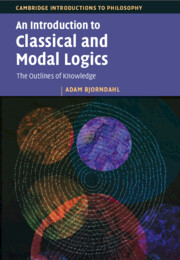Refine search
Actions for selected content:
37953 results in Cambridge Textbooks
8 - Financial Statements: Analyzing and Forecasting
- from Part I - Principles and Core Concepts
-
- Book:
- Principles of Finance
- Published online:
- 23 January 2025
- Print publication:
- 13 February 2025, pp 209-258
-
- Chapter
- Export citation
Bibliography
-
- Book:
- Principles of Finance
- Published online:
- 23 January 2025
- Print publication:
- 13 February 2025, pp 722-726
-
- Chapter
- Export citation
About the Authors
-
- Book:
- Principles of Finance
- Published online:
- 23 January 2025
- Print publication:
- 13 February 2025, pp xxi-xxi
-
- Chapter
- Export citation
11 - Agency Costs and Governance
- from Part II - Corporate Finance
-
- Book:
- Principles of Finance
- Published online:
- 23 January 2025
- Print publication:
- 13 February 2025, pp 312-332
-
- Chapter
- Export citation
20 - The Financial System and its Functions
- from Part III - Asset Pricing and Financial Markets
-
- Book:
- Principles of Finance
- Published online:
- 23 January 2025
- Print publication:
- 13 February 2025, pp 634-659
-
- Chapter
- Export citation
1 - The Ten Principles of Finance
- from Part I - Principles and Core Concepts
-
- Book:
- Principles of Finance
- Published online:
- 23 January 2025
- Print publication:
- 13 February 2025, pp 2-11
-
- Chapter
- Export citation
19 - Derivatives
- from Part III - Asset Pricing and Financial Markets
-
- Book:
- Principles of Finance
- Published online:
- 23 January 2025
- Print publication:
- 13 February 2025, pp 594-633
-
- Chapter
- Export citation
14 - A Unified Approach to the Valuation of Corporate Assets and Capital Structure
- from Part II - Corporate Finance
-
- Book:
- Principles of Finance
- Published online:
- 23 January 2025
- Print publication:
- 13 February 2025, pp 405-438
-
- Chapter
- Export citation
Chapter Two - Brain Mechanisms of Aging
-
- Book:
- Cognitive and Social Neuroscience of Aging
- Published online:
- 14 February 2025
- Print publication:
- 13 February 2025, pp 23-54
-
- Chapter
- Export citation
Detailed Contents
-
- Book:
- Principles of Finance
- Published online:
- 23 January 2025
- Print publication:
- 13 February 2025, pp viii-xvi
-
- Chapter
- Export citation
5 - Financial Instruments and Rates of Return
- from Part I - Principles and Core Concepts
-
- Book:
- Principles of Finance
- Published online:
- 23 January 2025
- Print publication:
- 13 February 2025, pp 102-138
-
- Chapter
- Export citation
Copyright page
-
- Book:
- Cognitive and Social Neuroscience of Aging
- Published online:
- 14 February 2025
- Print publication:
- 13 February 2025, pp iv-iv
-
- Chapter
- Export citation
Chapter One - Introduction to the Cognitive Neuroscience of Aging
-
- Book:
- Cognitive and Social Neuroscience of Aging
- Published online:
- 14 February 2025
- Print publication:
- 13 February 2025, pp 1-22
-
- Chapter
- Export citation
10 - Capital Budgeting
- from Part II - Corporate Finance
-
- Book:
- Principles of Finance
- Published online:
- 23 January 2025
- Print publication:
- 13 February 2025, pp 288-311
-
- Chapter
- Export citation
16 - The Term Structure of Interest Rates
- from Part III - Asset Pricing and Financial Markets
-
- Book:
- Principles of Finance
- Published online:
- 23 January 2025
- Print publication:
- 13 February 2025, pp 468-512
-
- Chapter
- Export citation
Figures
-
- Book:
- Cognitive and Social Neuroscience of Aging
- Published online:
- 14 February 2025
- Print publication:
- 13 February 2025, pp x-xxii
-
- Chapter
- Export citation
Contents
-
- Book:
- Cognitive and Social Neuroscience of Aging
- Published online:
- 14 February 2025
- Print publication:
- 13 February 2025, pp v-ix
-
- Chapter
- Export citation
Acknowledgments
-
- Book:
- Cognitive and Social Neuroscience of Aging
- Published online:
- 14 February 2025
- Print publication:
- 13 February 2025, pp xxv-xxvi
-
- Chapter
- Export citation
Chapter Five - Emotion, Decision Making, and Aging
-
- Book:
- Cognitive and Social Neuroscience of Aging
- Published online:
- 14 February 2025
- Print publication:
- 13 February 2025, pp 125-158
-
- Chapter
- Export citation

An Introduction to Classical and Modal Logics
- The Outlines of Knowledge
-
- Published online:
- 08 February 2025
- Print publication:
- 21 November 2024
-
- Textbook
- Export citation
